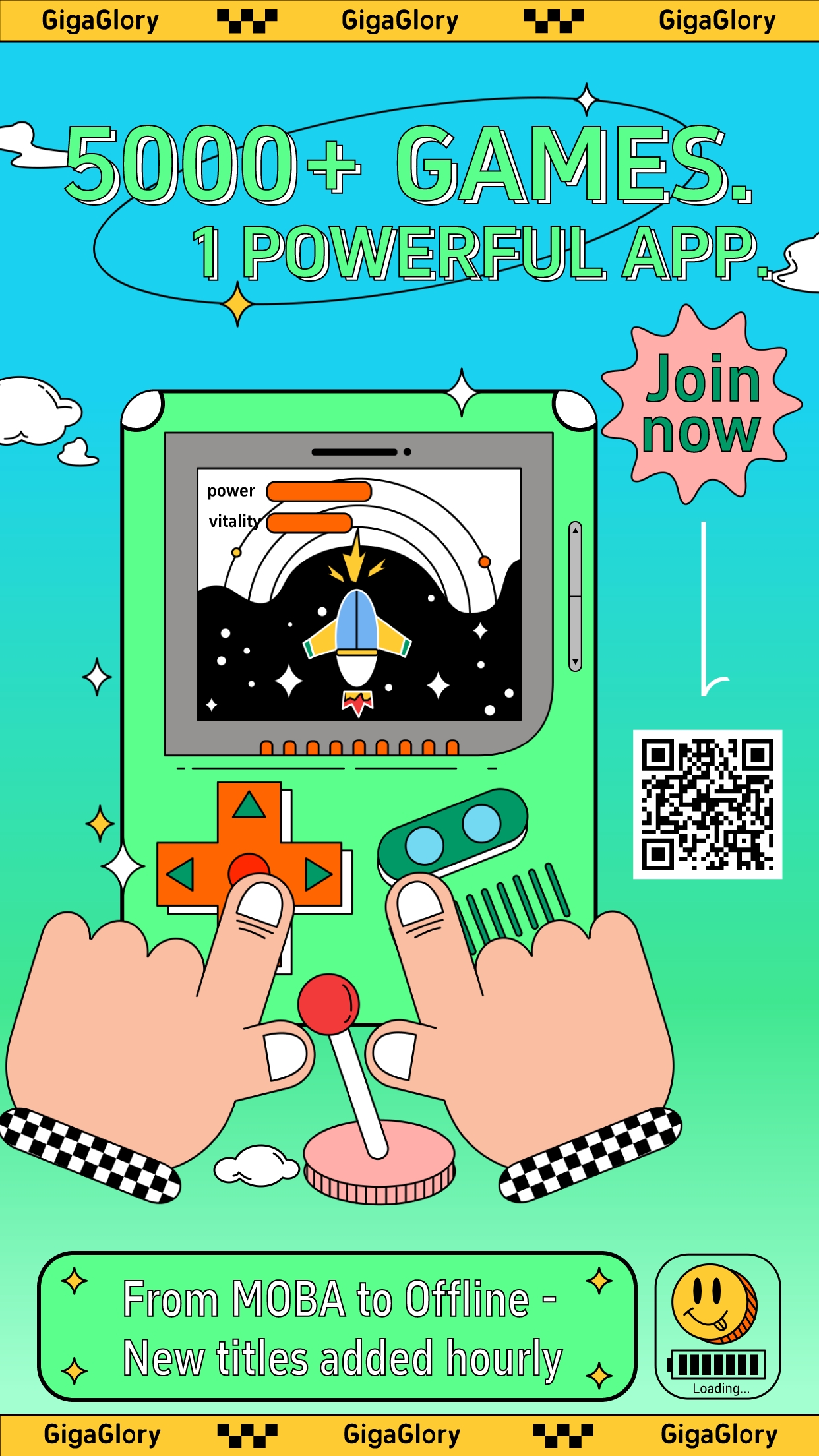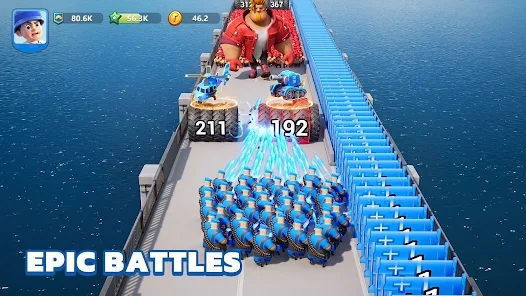The Future of Game Development: Trends and Innovations to Watch in 2024
| Trend | Description | Expected Impact |
|---|---|---|
| AI Integration | Smarter NPCs, better quests, more reactive environments | Enhanced realism and dynamic storylines |
| Holistic Metaverse Concepts | Gaming platforms that blend social, commerce, and play spaces | Larger communities, persistent identities across virtual worlds |
| User-Generated Content (UGC) Ecosystems | Creativity boosted by built-in game editors and community sharing | Bigger longevity and player-driven development cycles |
| Mobile Cloud Streaming | Easier cloud-based accessibility of premium titles via handhelds | More casual-to-hardcore adoption; hardware independence for players |
- Achieve faster results using cross-platform development tools like Unity or Unreal Engine.
- Pivot early into metagame systems: think NFT integration as a loyalty driver, not a paywall tactic.
- Rewards tied onchain encourage repeat user sessions without being disruptive — Clash of Clans did something eerly similar with clan wars badges years back, but we now have deeper tech.
- Experiment freely during soft launch—get player feedback from regions like South Africa before full release. This reduces bugs and keeps your retention metric healthy!
- Ditch the triple-A mindset. Even RPG games on DS got traction with clever world-building before epic graphics mattered… so don’t let budget be your creativity cap.
The gaming universe isn't static—it's an ecosystem that shifts at breakneck speed. As developers race toward innovation to meet player demand—and compete globally—what are must-know trends shaping the horizon? Buckle up for an insightful breakdown of everything digital, dynamic, immersive, & sometimes a little bizarre 😉
The Rise of AI Driven Experiences

In 2024, Artificial Intelligence (AI) has transitioned beyond hype territory. It is no longer limited to fancy buzzword status. Its role in games today can be transformative, reshaping both character interaction patterns and procedural content creation approaches altogether.
No more "scripted" dialog trees in role playing adventures! Developers like Nintendo tapped into these potentials as early back when thinking about DS based narratives. But hey, this decade? We go way further. Ever imagine having quest lines crafted based directly on your playstyles,? Yep, it’s happening folks. No need for a Deux ex machina—let AI weave your unique tale!
- Faction behavior adaptation - The way enemies react change according to how many times a player attacked them last session (like clans evolving strategies based on previous raids)
- User sentiment analysis: Games read microexpressions through webcam sensors or audio tones to adjust intensity levels in tense scenes. Sounds sci-fi, doesn't it? Wait till it rolls out in VR MMORPGS next winter.
- Moral dilemmas shaped specially to challenge individual users depending upon their ethical choices over time—this adds replayability while creating emotional depth rarely achievable through scripted routes only!
Key Takeaway: Make sure you explore the capabilities of AI-powered assets and narrative modules available on asset markets—especially ones tailored for smaller studios. Because big studios will use it anyway but indies should get a slice, right?! .
Hybrid Playspaces (Not Virtual Reality Only)
Real-world elements meeting virtual layers—that defines hybrid play," says Janine Marx lead researcher from Durban Tech Symposium 2022. “This isn’t augmented reality—it goes further. Imagine battling alongside others through geolocation-triggerd dungeons where every physical movement counts.
If you’ve experienced anything resembling location-aware treasure hunt mini-games (like Pokémon Go?), welcome home! What comes next builds on similar mechanics but pushes further:
- Augmented Physicality: Games triggering environmental feedback through AR smart glasses, sound speakers & motion trackers. For instance: fighting giants within your livingroom walls 🤯
- Spatial economy mechanics : Resources gathered in game can be converted into real-life credits. Like earning crypto tokens after winning CoC clan events and purchasing local goods online. Think about that for indie studio monetization possibilities 💎!
- Gamer mobility maps: Your movement across urban landmarks translates directly into progress points. Travel enough distance & collect digital items. Urban scavenger gameplay loops? Oh yeah, totally coming to life 👨🚀
Clash Of Clans Inspired Strategy Dynamics Evolving
Strategy games never sleep—especially those rooted deeply in cooperative tactics and long-term village expansion plans (yes we're lookin at ye ol’CoC veterans 😉).
In late 2023–we saw the first signs of a shift: older titles integrating adaptive strategy models. Instead of repetitive clan battles & pre-built defenses… devs began introducing terrain-altering algorithms that respond in real time.
- Dynami defense structures which evolve automatically according to attacker profile patterns (machine learning powered security!) 🔒
- Clan leadership rotation systems—no king stays forever anymore; encourages more strategic thinking & fair resource redistribution ✊🏾
- NPC allies generated via NSAL code logic—not static hired help but organic sidekicks that grow stronger under skilled command
- Faster rendering pipelines for 2D/HD mix visuals even on mid-tier androids
- Modular plot insertion – Players literally plug new segments via in-game purchases that make sense (think like DLC puzzles but woven into original quests).[citation needed]
- Persistent multiplatform states: Your character survives beyond a single session and evolves between consoles, mobiles & cloud logins seamlessly
- Low-barrier monetization: Most games aren't pay-to-win heavy there—players expect quality without predatory models, making it great sandbox for experimental designs
- High latency acceptance – Many games suffer network lag but users tolerate higher than Western averages; meaning smoother entry into beta-phase testing for high latency environments elsewhere.
- Idea: test early releases in CapeTown or Durban before going global to simulate worst network cases.
- pro Tip Local dev houses have begun crafting latency-optimized versions themselves—which is giving birth locally made clones that thrive on slow bandwidth.
- Emerging creative hub potential: From animation, music streaming to indie games—you find a lot more grassroots studios forming around Pretoria and Johannesburg compared earlier. Could become next Singapore or Warsaw?
- Mod creators are now seen less as third-party contributors…
but actual core development collaborators receiving revenue share - Built-In Level Builders integrated directly into main UI workflows
instead needing clunky external editor tools previously found with games such Nintendos Nintendogs DS builder modes (remember those?) 🐾🎮 - Voting-based idea pools drive future patch design direction
- Invisible transaction fees: charging minor cost per transfer instead outright purchases. Similar concept to Ethereum’s gas mechanism—except implemented smoothly unlike some crypto wallets 🌑;
- Physical merch bundles linked dynamically with online avatar customization options. Buy t-shirts offline -> unlock cape online (no QR needed just geo-ip tracking magic).
Traditional subscriptionsversus New wave tier model offering extra content AND community perks simultaneously. Like VIP Discord access along with weapon sets → makes value tangible & personal
Trend Spot Check:
| Adaptation | Lifespan Extension in Popular Titles (avg. usage) | |
|---|---|---|
| Mission Adaptability | +4.2M DAU (vs traditional missions) |
Customizable Quest Paths |
RPG Worlds Going Modular
We’ve all fallen madly in love once with classic handheld RPG experiences like Fire Embers Blade Tactics or Chrono Cross DS Remasters (if we didn’t then I worry for your childhood). These beloved universes gave us intricate storylines wrapped neatly inside small carts.
But what happens in 2024 when those same genres adapt modular storytelling structures that rival Skyrim’s scope but on mobile devices?
So the future isn’t about chasing HD textures anymore—it's about building **rich ecosystems that expand creatively**. Indie devs can now build entire kingdoms with branching roads that adapt live according to audience preferences—using lightweight engines optimized by cloud-based collaboration tools!
Side note: This modular approach could also reduce localization headaches significantly—making rpg games nds porting much easier between African dialect clusters, Southeast asian tongues, and Slavic scripts! More accessible gaming ahead folks 🗣.
South African Market Gains Momentum

Fast Fact: Mobile penetration rate in SA exceeded 93%
Popular Genres Across Age Segments in SA -2024 Forecast
| Age Range | Mainstream Hits | New Adopted Styles |
| Youth (< 17 yrs) | Puzzle / hypercasual (Roblox mostly ) | BattleRoyales |
| Teens / Young Adults | e-sports ready mobile ports (COD:Mobile etal ) | Strategic co-OP simluations e.g Clan Boss Battles |
| Young Professionals + Mature Gamers | MMOs like FFBE War of Primal | Indie narrative adventures (especially crime noir & historical themes) 🕹️ |
User Generated Content Takes Over
import random
enemy_types = ["Troll", "Goblin","Dragon"]
random.choice(enemy_types) #used for procedural spawning
def create_boss(difficulty_level):
return Boss(name='Darklord Zorgon',
helath_pool=floor(rand*max_hp(dif))
### Scripting example taken randomly from dev discord channels. Don't judge too harshly ;)
Main ways UGC is reshaping production:
Show/hide advanced case
One recent success story comes from an Indonesian dev team who allowed clan leaders (from their MOBA spin-off titled "Skirmishes of Kemet") to vote weekly challenges and level architecture together using blockchain ballots to ensure fairness—an interesting experiment into democratic design. Result? → Dropped churn rate by 21%. Users felt heard 👂.
Making money outside of ads—how does this work nowadays?
The dreaded intermission ad...the nemesis of immersive flow since 2005 (probably?). While banner/video ads remain, alternative avenues have grown rapidly especially in non western markets:
Revenue Shift in Top Ten F2P Apps (2023 Q4 comparison):
Conclusion
If there’s anything this deep-dive has shown—young audiences everywhere including places like S.A won't sit quietly waiting on stale gameplays & bloated franchises dominating headlines. Innovators win. Creators who empower community contributions. Developers daring enough to rethink genre constraints. So here’s the dealio: If 2024 offers lessons in anything—it should be courage, not complexity. Build modular, invite input early & don’t skimp on imagination. Whether you dream big with open worlds or go niche into retro remakes or hyper-niche strategy clashes—we say lean hard into bold ideas, they deserve a shot regardless if market tested yet or just plain wacky sounding ☺. Game on. Keep experimenting 🎲.



